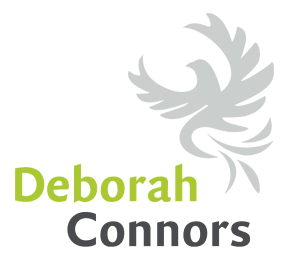
30 Sep Onwards and Upwards: How to Lead With Positivity
Photo by Brooke Cagle on Unsplash.
Have you taken any trips around a vicious cycle lately? Or down a downward spiral? You know, those times when one thing compounds on another, and before you know it, you’re feeling overwhelmed and in a state of languishing. This can happen to any of us as individuals. Teams and organizations can also get into these negative cycles of ineffectiveness.
I talk about these spirals a lot. In fact, I think that everything we do—our personal practices, our leadership practices, how we lead our teams and our organizations—either takes us in an upward spiral where we thrive and contribute, or takes us in a downward spiral toward languishing.
Dr. Robert Quinn, Co-founder of the Center for Positive Organizations, tells us that organizations are never neutral. They are always in a state of becoming more positive or becoming more negative. If we, as leaders, are doing nothing to move the organization in that upward direction, it is the nature of organizations to spiral downward toward what he calls slow death.
Have you ever experienced that feeling of slow decline in an organization? I know I have. It is a common phenomenon, and often the result of not knowing how, or not wanting to, make the deep changes necessary to turn things around.
Quinn says that most people actually choose slow death over making deep change. Why? Because shifting the culture requires significant personal change, and this often seems daunting.
The focus of my work is helping leaders like you to shift your practices – whether these be personal leadership practices, or the practices you use with your teams and throughout your organization. As you develop more effective practices it allows you, and those you lead to thrive and contribute your best, and it makes leading easier!
PERSONAL SPIRALS
Let’s say you’re having a bad day—one of those days like I had last week where my website crashed, and I got locked out of my email in the midst of trying to get a promotion out for my new course. This was not just a bad day—it was a three-day issue. It was one of those hair-pulling, frustrating times they write country songs about. You know the “can’t-sleep-getting drunk on a plane” type. But wait! It’s precisely these times that we practice for.
If we are developing new practices—like emotional intelligence, meditation, mindfulness and daily gratitude, for example—and practicing them daily, we might sometimes wonder if they are of any benefit. But when you have a day like I had, and start going down that downward spiral you realize that THIS is exactly the situation you’ve been practicing for!
On my recent particularly bad day, I had a choice. I could choose to be frustrated and focus on that which I could not control, or I could practice acceptance, and ask myself some transformational questions.
I asked:
- What can I control in this situation?
- What is one small step I can take toward resolving it?
- While I wait for this to resolve, what is one thing I can do to relieve my stress?
The last question led me to take a break for a walk in the forest. It was the perfect way to get both perspective and exercise. The situation resolved itself in short order, and I averted going in that downward spiral by just stepping away.
TEAM SPIRALS
Now let’s say your team has started to fall into some negative habits and is headed in a downward spiral. For every positive interaction, you’re starting to see a negative one. The team is not functioning well. And you know if you let the situation go on it just will just keep spiraling downward. There are numerous practices that can be introduced over time to shift the team culture upward.
For example, any practice that improves the social reflexivity of your team (meaning how the team supports the well-being of its members) helps to create a more positive team climate. One specific practice that I often recommend is learning to facilitate an effective team debrief at the end of each meeting. This is simply taking 5 minutes to review how the meeting went from a social standpoint. This is not about what tasks need to be done, but more about how people felt in the meeting. Did they feel they had the opportunity to give input? How do they feel the meeting could be improved? A meta-analysis of 46 studies on team debriefs showed that those teams who regularly do this are on average 25% more effective.
Even simple practices like starting your meetings with an inspirational story, or having people share a “win” can start to shift the balance of positive interactions to negative in your teams and begin to change the spiral from downward to upward.
HOW TO TAKE YOUR ORGANIZATION IN AN UPWARD SPIRAL.
When I get a call from a business to work with them on their culture, I notice that there typically has not been much focus in this area yet. Up until this point, the focus has been on products, services, sales and marketing strategies, but when the business gets to a certain size or time in its history the culture becomes vitally important.
At this point, a downward spiral has often started to happen. Dr. Martin Shain, an organizational health and legal expert who has studied the implications of negative psycho-social environments at work calls this “the cost of doing nothing.” Nothing has been done to focus on culture, specifically on developing positive practices to create an environment where people can flourish and contribute their best. As Shain says “The cost of doing nothing refers to the fact that nothing is ever neutral—things are either going forward or going backwards, so if you’re doing nothing, things are basically going backwards.”
The good news is that these costs are easy to identify and are measurable, so you can use them as a baseline. From an organizational perspective we now have a lot of research and data from studies done through a business discipline called Positive Organizational Scholarship which studies the practices that lead organizations to become positive places to work.
There are 5 principles of positive organizing that come out of this work and that lead to a cycle of continual renewal, where employees are engaged and exceed expectations, according to Quinn and Cameron, two of the founders of this field of study. Those principles include:
- Finding Purpose – allowing purpose to emerge within the organization rather than having senior management define it. One way of doing this is to ask throughout the organization “For what would we sacrifice?”
- Authentic Conversation – this means moving beyond political correctness to be able to say what we really feel, to constructively confront one another versus avoiding difficult issues, and learning without blame, versus punishing mistakes.
- Seeing the Possibilities – finding ways of increasing positivity in the organization (e.g. through positive meetings, and giving regular feedback in an appreciative way). This helps people to become more optimistic and focus on possibilities versus constraints.
- Focus on the Common Good – moving past our own self-interest to embrace the common good. This requires developing practices to reduce internal competition (the kind that hinder the creativity and innovation we need for breakthrough performance.)
- Trusting the Emergent Process – empowering people to try new things and initiate without management direction; trusting that the results you want will emerge as you put the right practices in place.
Higher performance as leaders, as teams and as organizations is not just enhanced by positive practices, it requires them. Now it’s your turn. Based on these ideas, what can you do to create positive, upward spirals in your own life, and in your team or organizational culture?
Follow this blog for more ideas on creating your better place to work, and join us for my upcoming Leading A Better Place To Work online course launching October 15th. We’ll be discussing these ideas and more in this 10-module self-directed course. Log in anytime from anywhere and work at your own pace. AND if you are a part of the course, you can also hop on a free Zoom call with me and the other course participants each month to ask questions and share ideas. I really hope you’ll join me! And the best part? We’re offering pilot pricing of only $97 to the first 100 people to attend this course. That’s only $9.70 per module! (Regular price is $297.)

